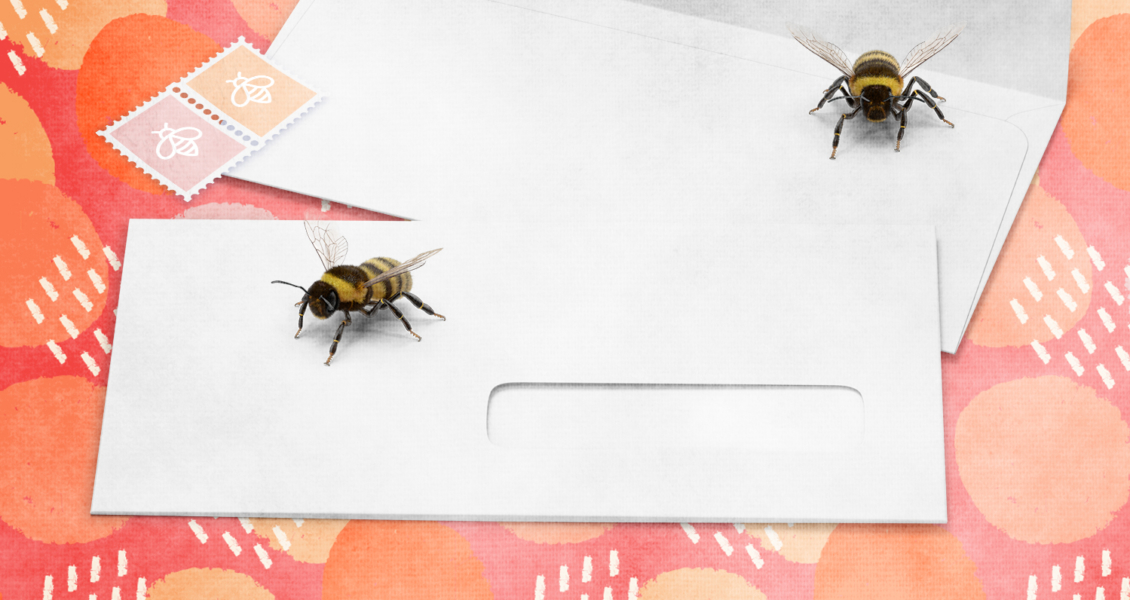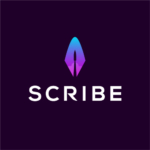Pre-orders can help build buzz for your book, which in turn can build marketing momentum.
But many people work harder to get pre-orders than they should.
They see other Authors taking pre-orders and running pre-order campaigns, so they automatically assume they should do the same thing. But what’s right for a small handful of Authors isn’t the best choice for most.
In fact, I don’t recommend that most Authors try to drive presales.
Why? Because most readers are reluctant to buy a book before they can read it.
Thus, trying to sell copies before your release date isn’t the most effective way to spend your time and energy. The conversion rate of everything you do before the book launches is much worse than when the book releases.
Don’t waste your marketing efforts. If you want to build buzz for your book, it’s better to spend time building your email list and getting people excited. Then, you can ask them to buy the book once you’ve launched it.
If you can gather email addresses in advance, you’ll still sell the book when it comes out. Plus, you’ll have a contact list for the larger objectives you want to achieve with your book.
That said, if you’re still interested in presales, this article will explain everything you need to know.
I’ll dive into why some Authors care about presales, how to approach presales if they’re right for you, and what I usually recommend Authors do instead.

Why Presales Matter to Some Authors (and Why They Aren’t Usually the Best Way to Build Buzz for Your Book)
There are some rare cases when focusing on presales makes sense. Here are 4 specific contexts when Authors may find it beneficial.
1. If You’re Trying to Hit a Major Bestseller List
One of the most common questions I hear is, “How do I get on a bestseller list?”
Honestly, most Authors would be better off ignoring those lists. It may sound counterintuitive, but having a bestselling book isn’t the best way to meet your professional or personal goals.
Bestseller lists aren’t what they seem.
In fact, many bestseller lists are a lie. Why? Because they don’t actually rank books by sales.
They’re either:
- curated by a small group of people who pick books based on what they think is “important”
- OR based on a limited number of sales in a few major retail or online outlets
In other words, bestseller lists (like the New York Times) don’t necessarily reflect what’s actually selling. Not only that, they typically only include books that are traditionally published—not self-published.
You’re better off focusing on your target audience than on trying to generate enough book sales to hit a bestseller list.
But if you’re among the rare Authors still aiming for a list, presales matter. That’s because, for the major bestseller lists, presales are added to your first-week sales.
That means most people who hit the list during their launch week have run extensive pre-order campaigns.
To be clear, when I say “extensive,” I’m talking about more than 10,000 pre-orders.
Considering that most books sell a lot fewer copies, that’s a high bar to reach. For comparison, most nonfiction books sell less than 1,000 copies in their lifetime.
But don’t let that number fool you. Many of our books have been highly successful.
Remember, sales are just one way to measure a book’s success.
Note: the Amazon bestseller list works a little differently. Amazon sales count the day they happen, so you’re better off not focusing on presales.
To have the best shot at a great Amazon ranking, you should focus on getting people to buy your book on the day (or week) it launches.
2. If You’re Working with Traditional Publishers and Bookstores
If you’re working with a traditional publisher or focusing on getting your book into brick-and-mortar bookstores, pre-order data is useful.
For one, it can impress your publisher. In turn, they might dedicate more PR resources to your book and work harder to push it to bookstores.
It can also impress bookstore buyers, who help decide which books make it to the shelves.
But for self-published Authors, there are huge risks to being in bookstores (with no real upside).
Because of bookstores’ pricing models, you won’t make much money—even if your book does well. And if your book does poorly, you could end up losing thousands of dollars.
Of course, it’s hard to deny the thrill that comes from finding your book in a brick-and-mortar store. But that thrill is rarely worth the risk.
In all honesty, the future of publishing has almost nothing to do with brick-and-mortar stores or book sales.
Instead, it’s about using your book to make money in your business. That might mean attracting new clients, getting speaking engagements, or increasing your credibility & authority in your field.
To do that, you don’t have to focus your book marketing on presales—or even on book sales at all. You just have to focus on leveraging your book to meet your business goals.
At the end of the day, you’re not promoting your book. You’re using the book to promote yourself and your business.
3. If You’re Concerned about Print Runs
Authors have 2 main options for printing their books:
- Print-on-demand (PoD)
- Offset Printing
The first option is exactly what it sounds like. Your book is only printed when someone orders a copy. That means you’ll never end up with an excess number of copies, and you won’t have to pay for books you never sell.
With offset printing, a printer prints a large number of books in advance.
If you know that you’ll sell a large number of copies, you can usually get a lower per-copy price. For example, a print run of 5,000 books would be cheaper per copy than a print run of 1,000 books.
Offset printing is also a better option if you want to print a hardcover version of your book. The quality is higher.
If you’re really confident in your audience, offset printing can be a cost-effective choice. But you must be realistic. You don’t want to order 5,000 books and end up with 4,000 sitting in your garage.
If you don’t know how many books to print but want to use offset printing, presales can help you gauge how many copies you can reliably bet on. This significantly reduces your risk.
4. If You Have Special Circumstances
Some Authors have special pre-order incentives that make people want to buy the book in advance. For example, by pre-ordering the book, readers may get a ticket to a specific event.
For some people, this kind of book marketing can work—especially if they’ve already built up an audience, and they’re trying to use their new book to get on a major bestseller list.
But for most Authors, it’s better to just collect email addresses and create buzz in other ways. I’ll explain more about how to do that below.

How to Run a Pre-Order Book Campaign
If you fall into any of the 4 groups I mentioned, you may want to run a pre-order campaign for your book. Here’s how to do it.
1. Build Your Audience
Build up as much of an audience as you can beforehand. Usually, it takes years to build a list substantial enough to make running a pre-order campaign worthwhile.
Your potential readers may come from any number of places:
- your professional contacts
- your personal contacts
- readers from any previous books you’ve published
- your audience if you run a blog or podcast
- media contacts for online, print, or podcast outlets that have featured you
- social media contacts
Basically, anyone you know that may have an interest in your book should go in your potential audience list.
2. Create Sales Incentives (a.k.a., Swag)
As I mentioned, readers are reluctant to buy a book before they can actually have it in their hands.
If you want readers to pre-order your book, you have to give incentives to make their purchase worthwhile. In other words, bribe them.
There are many ways you can do this: give away bonus content, offer a sneak peek of your next book, enter them in a giveaway for a gift card or more valuable swag, invite them to an exclusive Q&A, create a swag pack that includes promotional materials like stickers or enamel pins, etc.
Whatever it is, it should be something with a value that’s higher than the cost of the book. Don’t skimp.
You might ask, “Why would I give away more money than I’m getting?” Because that’s the most reliable way to build buzz and encourage readers to pre-order the book.
No one gets excited about a 10-cent bookmark. They do get excited about an extra workbook, promotional events, or a free online course.
3. Get Them Talking
Word of mouth is one of the fastest ways to build buzz about your book. Plus, people buy books because they hear they should read it from their family, friends, or other people they respect.
When you offer valuable pre-order incentives, it not only encourages people to pre-order your book, it also gets people talking. I especially recommend creating incentives that build social sharing—e.g., bonus content that makes them want to tell other people about the book (and any available bonuses).
For example, Michael Hyatt and Daniel Harkavy came up with a great set of pre-order incentives for their book Living Forward. After readers buy the book, they visit the website and submit proof of purchase to claim their bonus.
For individual readers, that includes a supplementary workbook worth $47.
For leadership teams that buy 10 copies, it includes $210 worth of bonus content: the workbook, audio training, a custom coloring book, a leader’s edition of the workbook, and behind-the-scenes videos.
All those extras make pre-ordering the book a high-value proposition.
Once readers see how much value they’ve actually received from their purchase, they’re encouraged to share the book on social media. That’s a great marketing strategy because it helps build general awareness about the book.
Your marketing goal shouldn’t solely focus on conversions. It should also be about staying top of mind within your target audience.
Remember, it’s hard to get people beyond your own audience to actually buy the book. So the more you can do to keep your book at the forefront of people’s awareness, the better.
4. Set a Solid Pricing Strategy
Setting the right price for your book is a complicated topic. It depends on 2 major factors:
- How many copies you want to sell
- How you want your book to be perceived
When your book price is too low, it lowers the book’s perceived value. A lower price doesn’t always mean selling more copies.
I recommend selling presales at whatever “normal” price you decide. It makes the book seem more valuable, and your incentives will offset readers’ risk in buying a book sight unseen.
Then, during your launch week, I recommend setting your ebook’s price at $0.99. This helps you run promotions and push as many copies as you can.

If Buzz Is the Goal, Do This Instead
Getting someone to pre-order a book is harder than ever because buying a book is easier than ever. People don’t have to buy your book ahead of time in order to get it on the day it’s released. They can get it on Kindle immediately. Or delivered to their doorstep in a day or two.
It’s much easier to get someone to give you their email address than their money. Thus, I recommend dedicating your pre-launch efforts to building a solid email list instead of focusing on presales.
With an email list, you have the opportunity to communicate with your potential readers. You can reach out many times so that they gradually get more excited about your upcoming book.
It also gives you a chance to:
- repeatedly remind them of your launch date
- provide examples of the quality content they’re going to see in the book
Most people won’t buy something the first time they see it. An email list gives your readers a chance to get to know you over time.
Consistent emails also help them see the potential your book has to make an impact on their lives (and see how it can help them solve their problems).
Most importantly, an email list gives you a list of people who want to connect with you. After your launch, you can continue to use this list to promote the real ways you’re going to make money through your book.
This is a much better marketing strategy than focusing on the short-term gains of presales.
Here are 3 key ways you can use your email list to build buzz and sustain it after your book launch.
1. Give Them an Easy Way to Join
The best way to build your email list is to make it easy for people to join.
Every time you make a media appearance, serve as a guest blogger, or post on social media, provide a link so people can sign up for your email list.
The most logical place to do that is on your website.
Keep it simple. The address should be easy to remember, and the place to sign up should be obvious.
I also recommend providing a bonus if they sign up for your email list. A free book chapter is a solid option, but it’s even better if you offer them something unique they can’t obtain elsewhere.
2. Media Appearances
You can create added buzz by highlighting your media appearances. Including videos and links in your emails will help people learn more about the book. Plus, having the approval of the media will enhance your credibility as an Author.
When it comes to media coverage, don’t assume you have to shoot for the biggest and most well-known outlets.
In the same way that bestsellers lists aren’t the fastest or easiest way to grow your success, mainstream media coverage isn’t the fastest or easiest way to grow your book buzz.
It’s better to appear on podcasts, blogs, and other media that speak directly to your target audience (no matter how niche it may seem).
The riches are in the niches. It’s better to speak directly to people who are likely to read your book than to millions of USA Today readers who will probably skim over your article.
Read our article on how to maximize media coverage for your book to learn more.
3. Connect with Your Audience
Your emails offer a unique opportunity to connect with your audience on a more personal level.
Readers love feeling like they have a connection with an Author. They don’t want to read bland words on a page coming from someone utterly lacking in personality. They want to form a connection and get drawn into your world.
Use your email list as a way to get excited about your book. Take them behind the scenes or explain why you wrote the book. That will allow them to get a deeper sense of you as a person.
Not only can this material go in your newsletter, but it can also be the foundation for new content.
You might use it as a template for articles or as the basis for a press release. Who knows? While you’re writing, you might even discover the idea for your next book.


